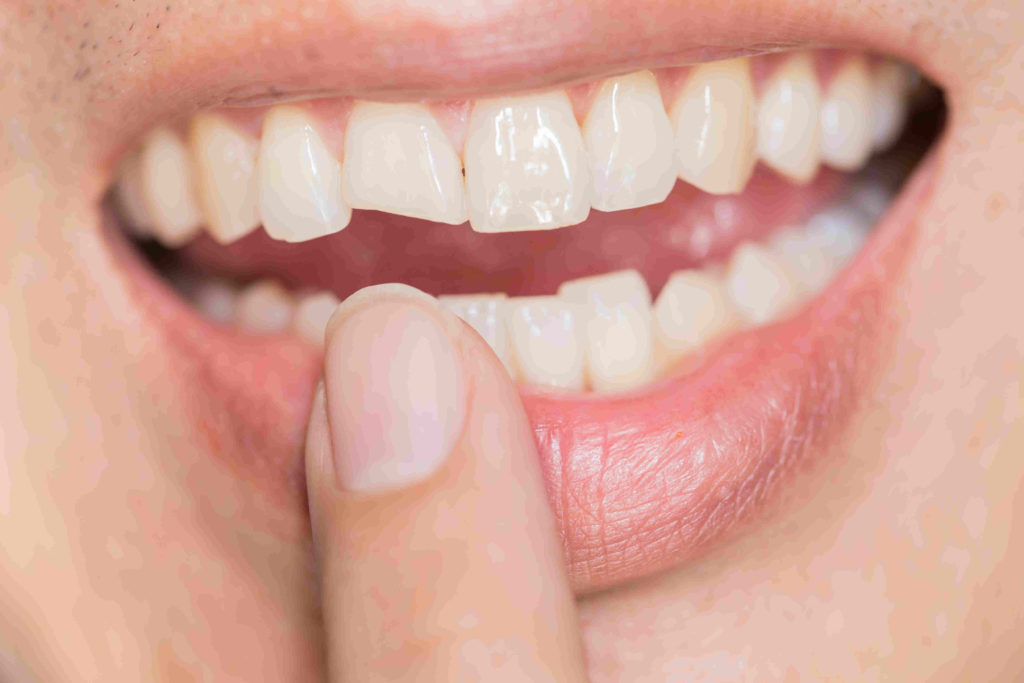Do you have a broken or cracked tooth? Whether you're a child or an adult, you're never safe from an accident that affects your teeth. In fact, this is a fairly common occurrence at our dental practices in Fribourg, Lausanne and Aigle. Often experienced as a trauma, this problem fortunately has solutions. Fractured teeth are dental emergencies requiring immediate treatment.
Broken teeth: common causes
Tooth fracture can occur in different ways:
- After biting into a hard food.
- Trauma to the jaw following a fall or blow.
- Untreated decay causes tooth enamel to crumble, leading to partial fracture of the tooth.
- A fragile devitalized tooth that can break if precautions are not taken (dental crown).
- Repetitive teeth grinding or involuntary jaw clenching (bruxism)
- The natural aging of teeth, which also increases the risk of cracking or fracturing a tooth.
What is dental trauma?
Visit dental trauma particularly affect children and adolescents. Most often, they involve the "front teeth", which are naturally more exposed. These include the incisors and upper canines. Premolars and molars are more rarely affected. They are better protected because they are located at the back of the mouth. In the event of dental trauma, other parts of the mouth can also be damaged: the bones, gums, oral mucosa and tongue.
Types of dental fracture
Fractures are classified according to their depth. The deeper the lesion, the more extensive the treatment.
Enamel fractures
In this case, you notice rough or sharp edges on one or more teeth. However, you have no other symptoms. The dentist in Lausanne, Fribourg or Aigle will propose a smoothing of the edges and an improvement in the aesthetics of the tooth.
Dentin fractures
If the dentin is exposed but not the dental pulp, you'll notice a sensitivity to cold air and water. You can then take a mild analgesic. Dental treatment involves restoring the tooth with an ultra-resistant composite resin (white filling). This is an excellent solution for repairing a broken molar, for example. In the case of a major fracture, the dentist can fit a dental crown to cover the exposed dentine.
Dental pulp fractures
Pulpal effraction (haemorrhage from an exposed pulpal horn) and tooth mobility are major risks. dental emergencies. Dental treatment usually involves the root canal.
Root or alveolar fractures
They are not visible, but the affected tooth or teeth may be mobile. It is just as urgent to consult a dental surgeon in French-speaking Switzerland. He or she will stabilize the tooth by bonding an orthodontic arch or polyethylene fibres to several adjacent teeth. If the root is cracked or fractured, the dentist will have no choice but to extract the tooth. Treatment then consists of placing an implant or bridge to replace the lost tooth. The last (and least expensive) solution is to fit a removable appliance held in place by a metal plate or clasps. This last solution is only recommended when several teeth have been lost.
What to do in the event of a tooth fracture?
The right thing to do is to retrieve the piece of tooth, if necessary. The dentist can then reattach it if necessary. Ideally, you should store it in a sterile saline solution available from your chemist or in a special dental first-aid box. As the tooth is a living material, it must be surrounded by all the necessary hygiene precautions to avoid necrosis. To increase the likelihood of refixation and avoid pain, a visit to the dentist is essential within 24 hours of the accident.
Broken baby teeth in children
This situation also calls for an urgent consultation. The dentist will ensure that the germ of the permanent tooth is not affected, and that the accident does not interfere with its growth. Milk teeth ejected in an accident are not re-implanted in their sockets, as necrosis and periapical infection are common. They may also become ankylosed without root resorption, thus hindering the emergence of the permanent tooth. If the pulp is affected, the dentist will make a dental crown, which will be revised once the teeth have taken their definitive shape.
Broken teeth: treatment options
If certain problems are visible to the naked eye, only an X-ray will reveal deeper alterations or hidden lesions in the tooth root or pulp, and enable the appropriate endodontic treatment to be carried out.
A broken tooth? Don't wait to consult your dentist. Beyond the aesthetic aspect, you need to think about your oral health. In the event of a dental emergency Helvident dental centers welcome you without appointment. We advise you to call us beforehand.

